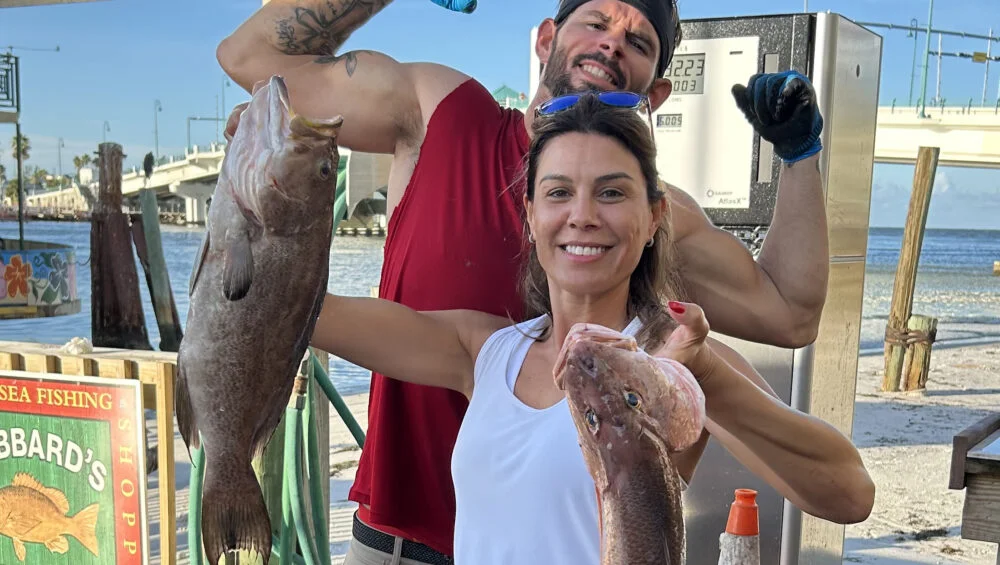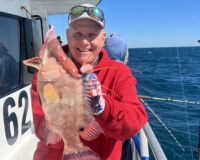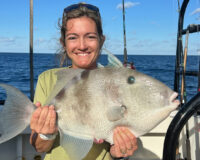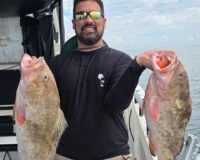Inshore Fishing Report
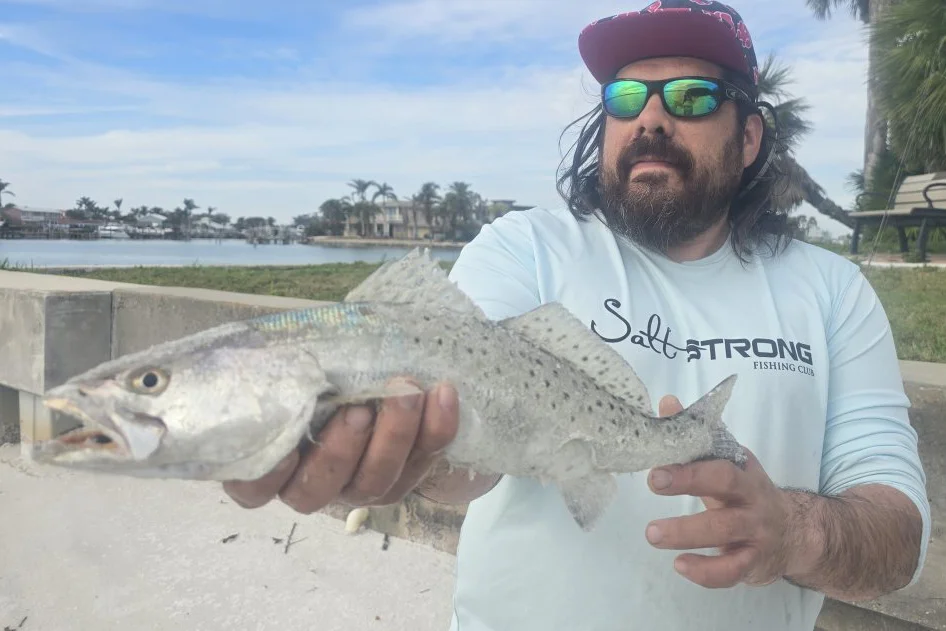
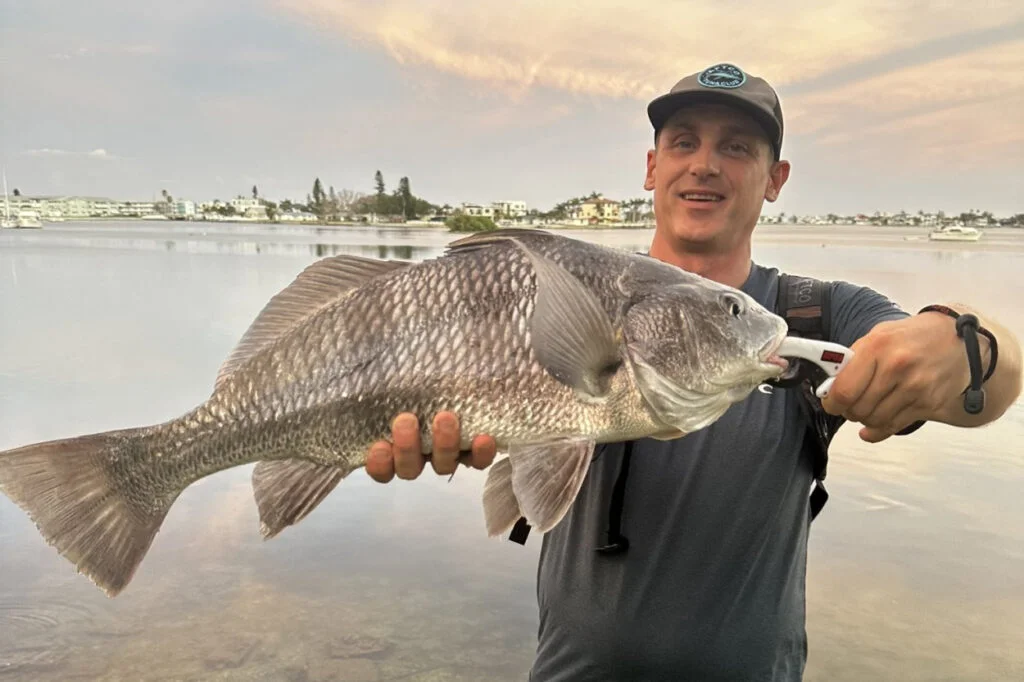
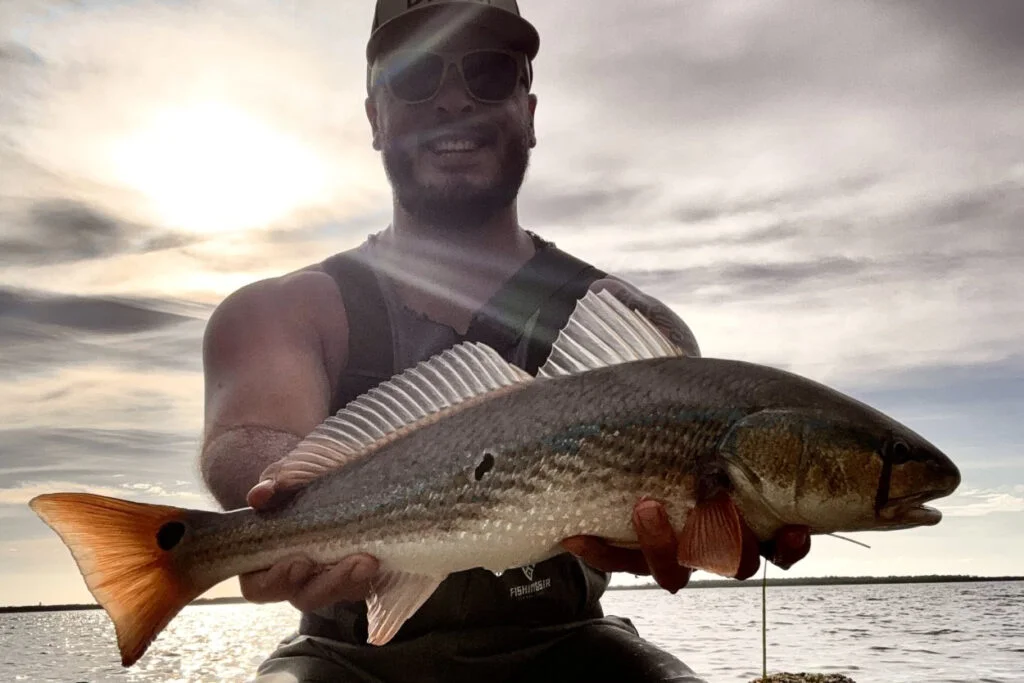
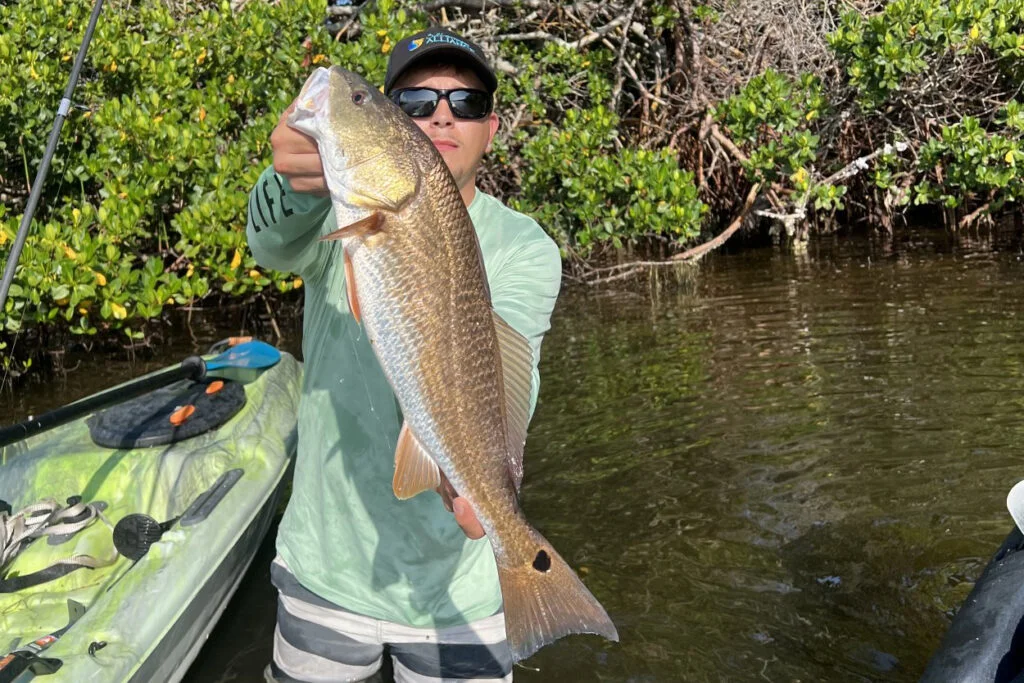
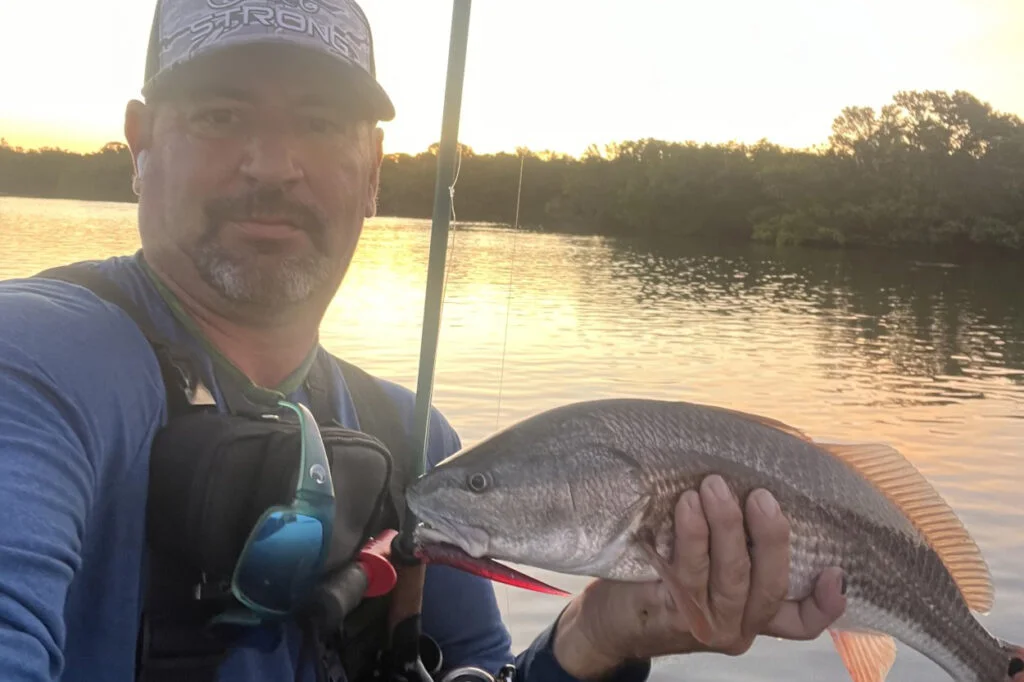
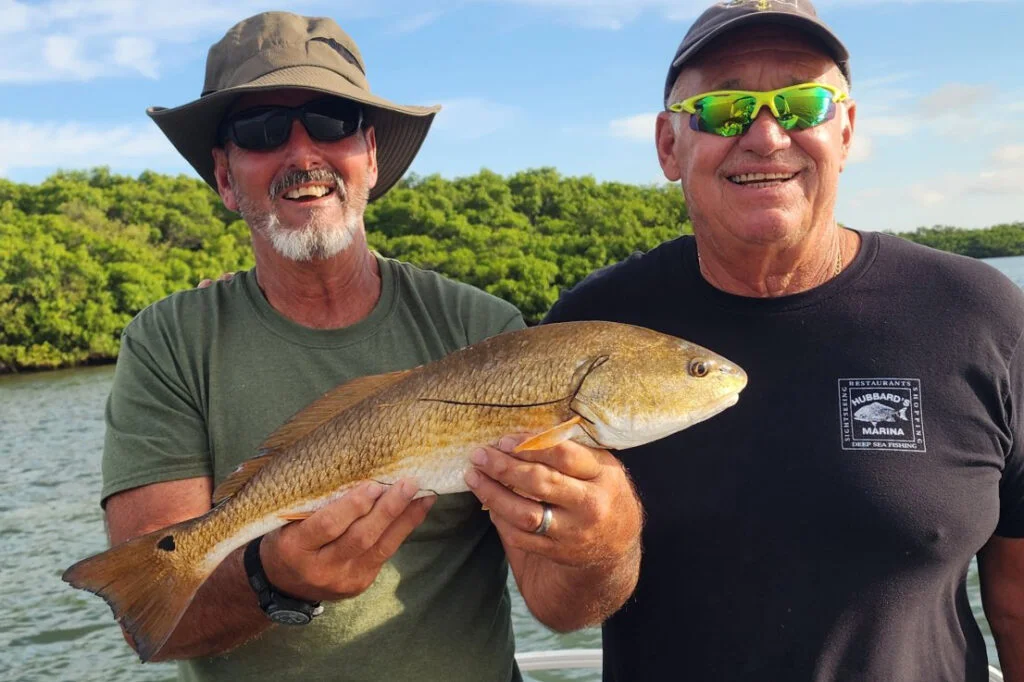
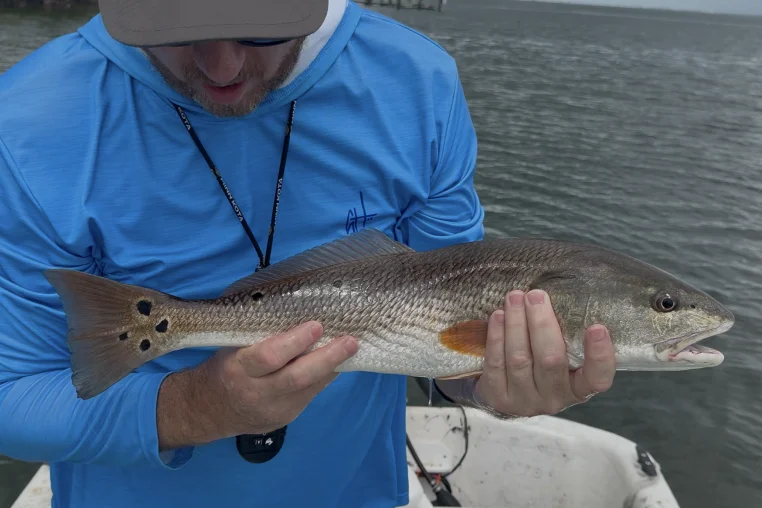
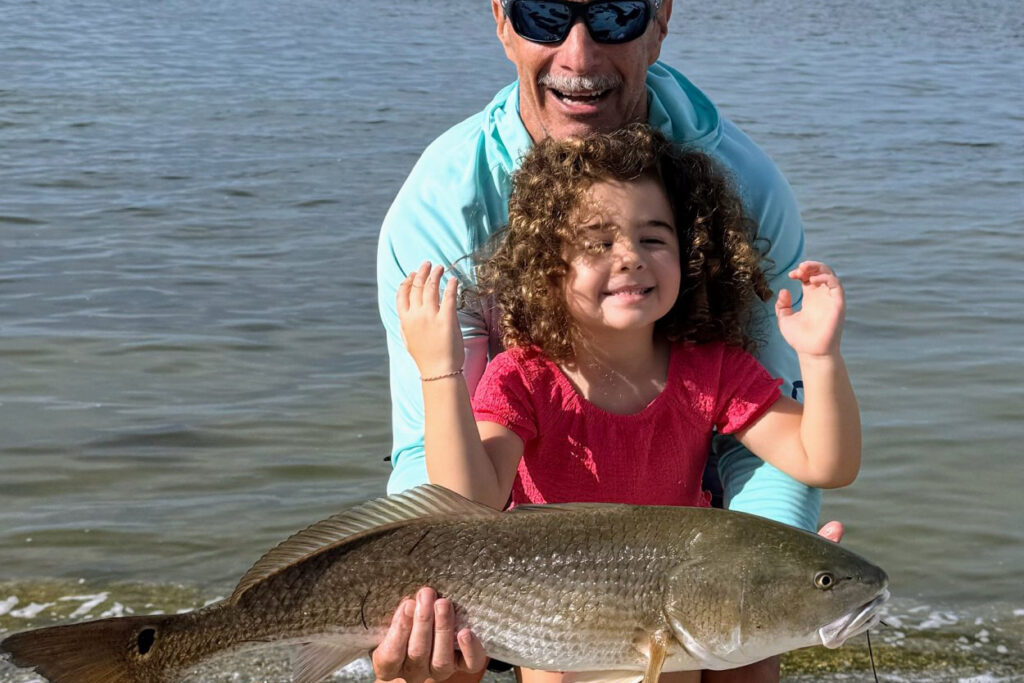
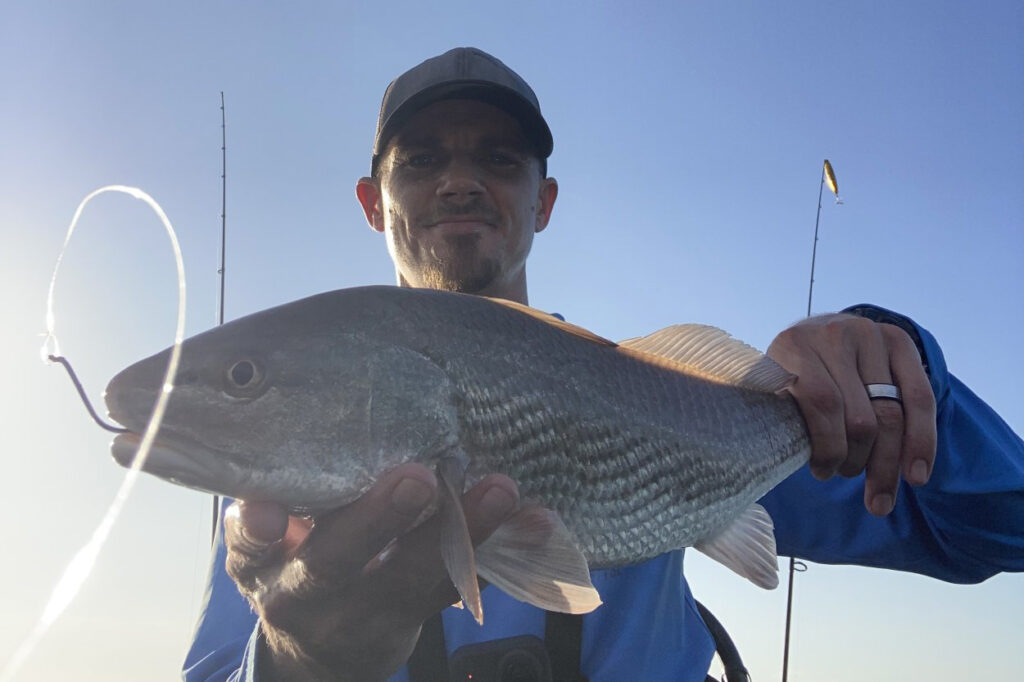
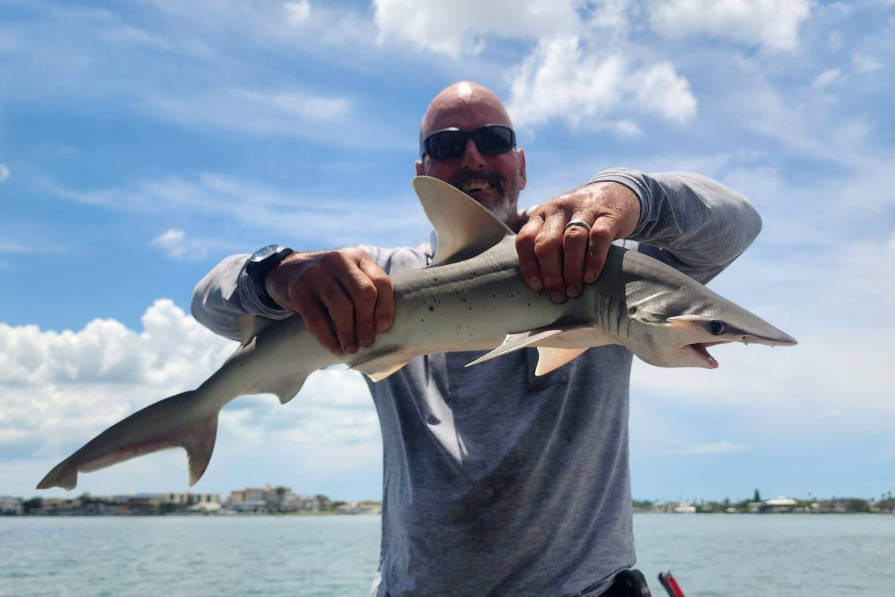
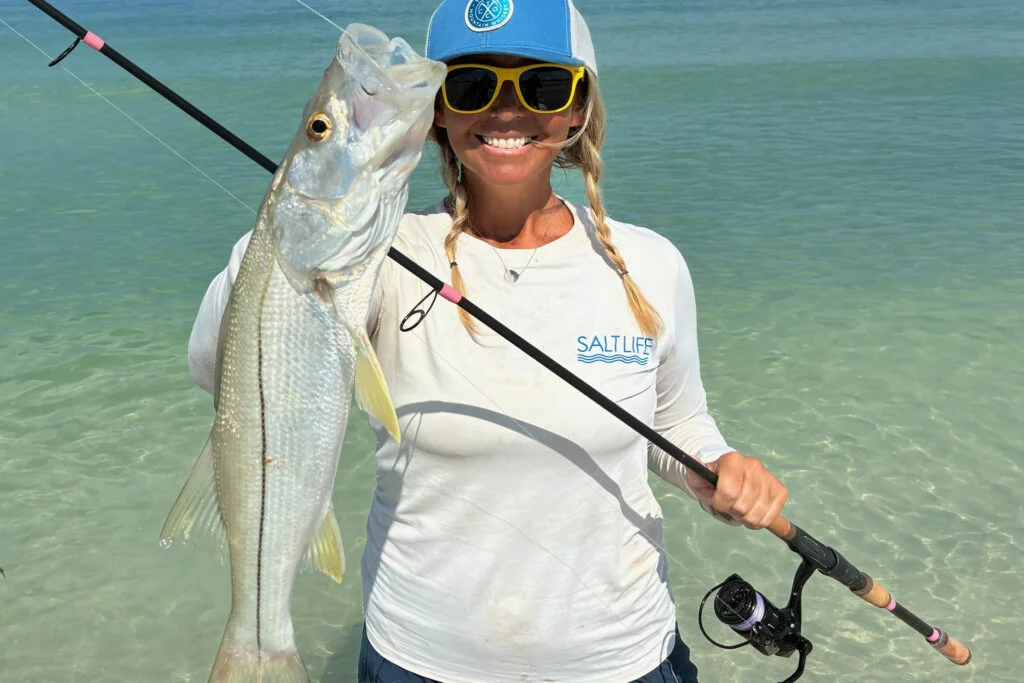
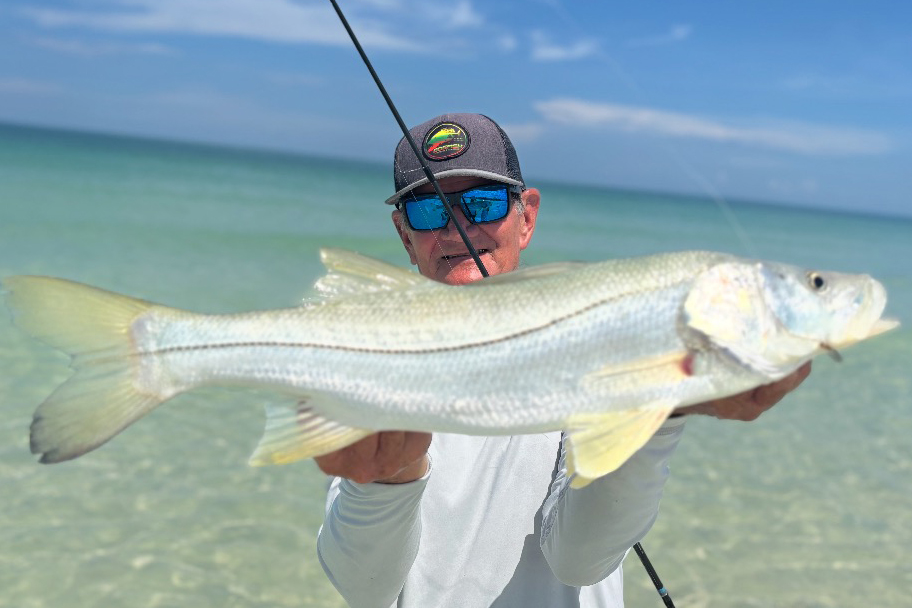
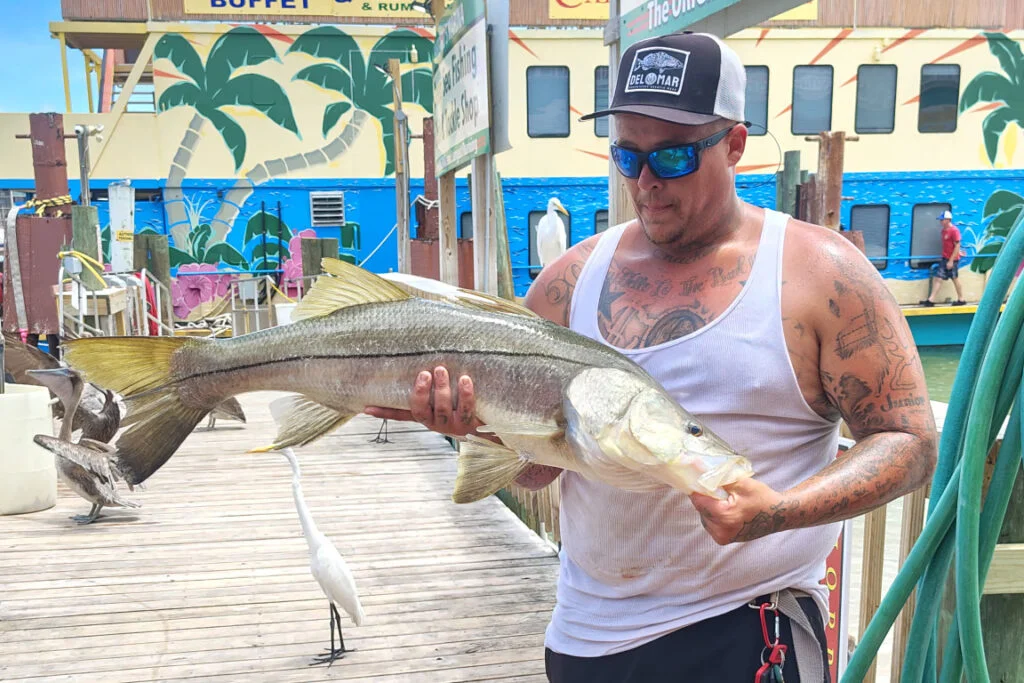
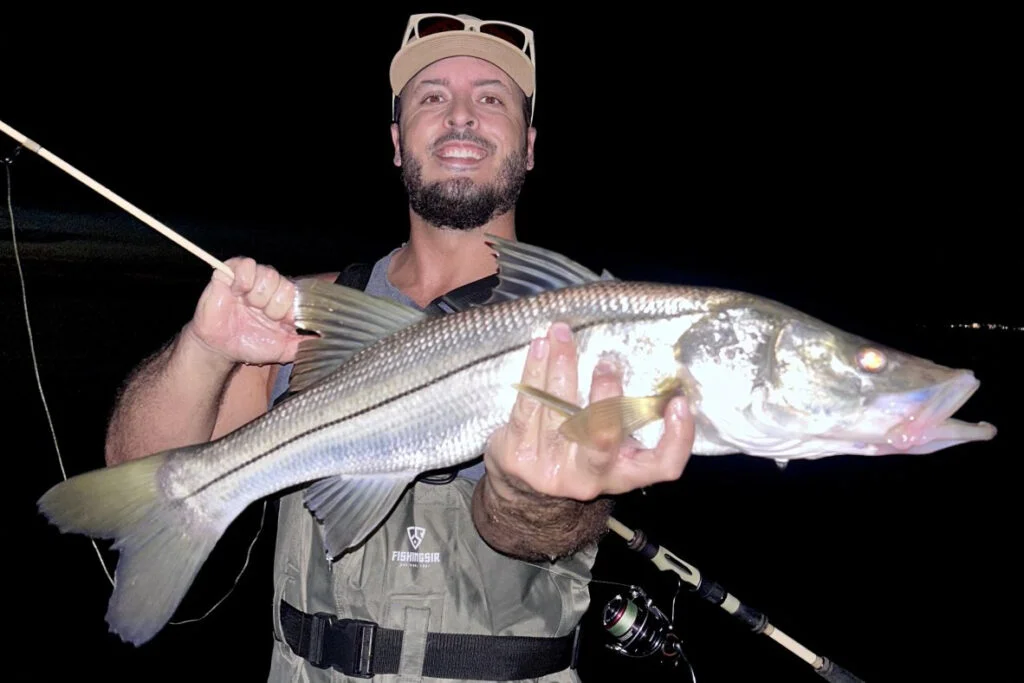
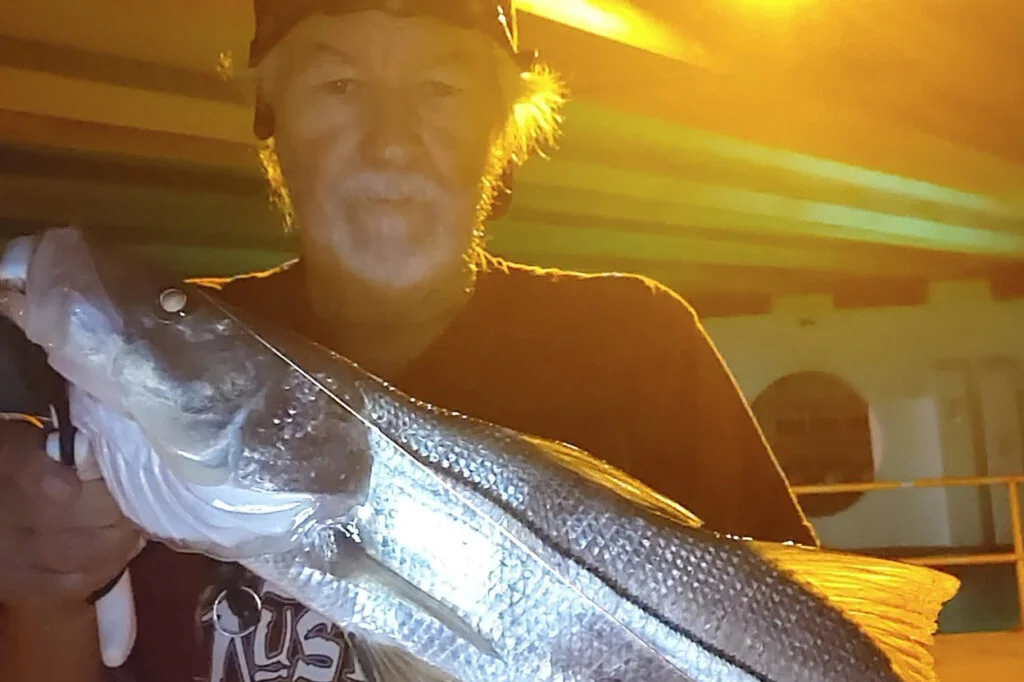
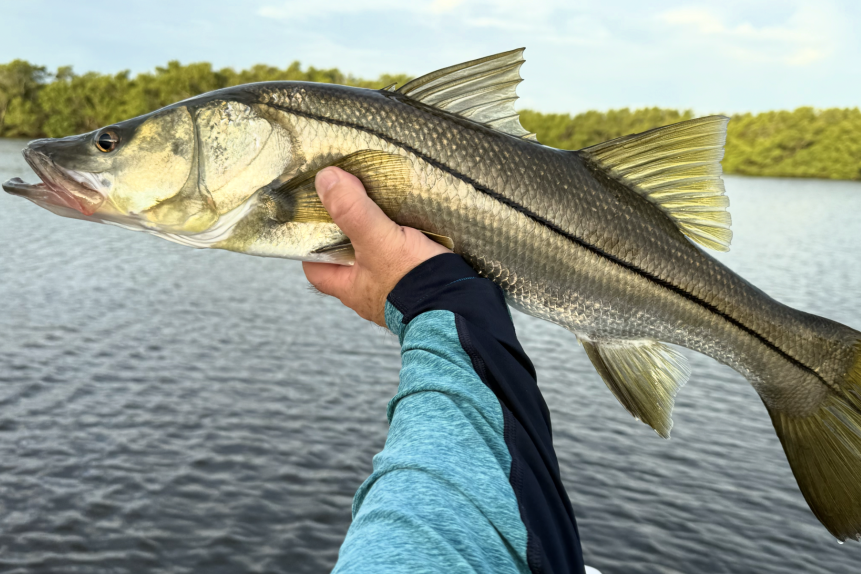
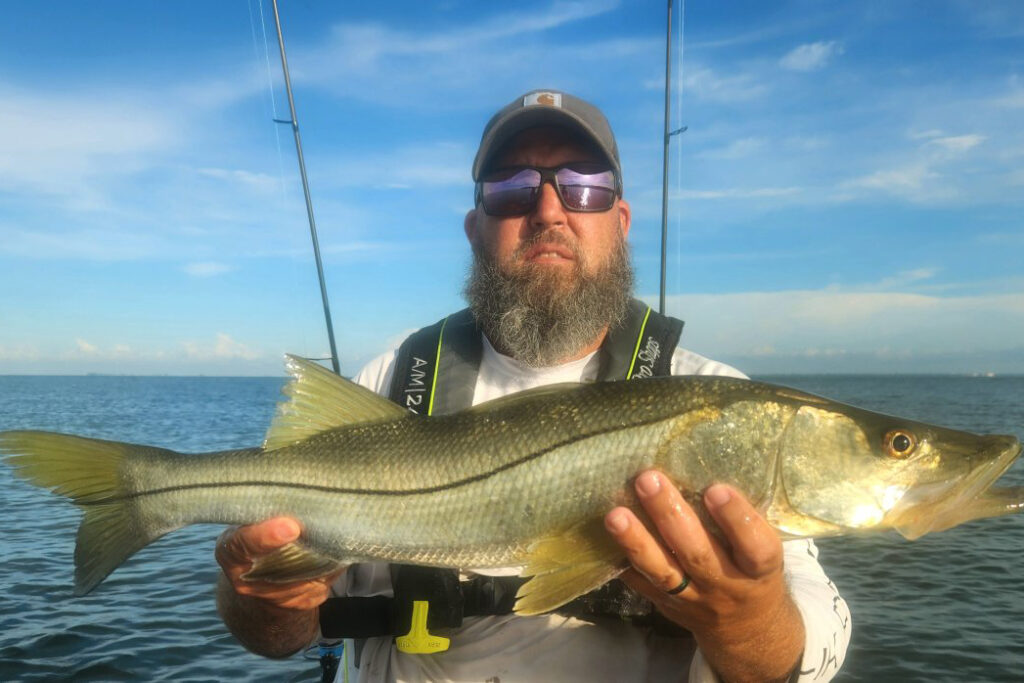
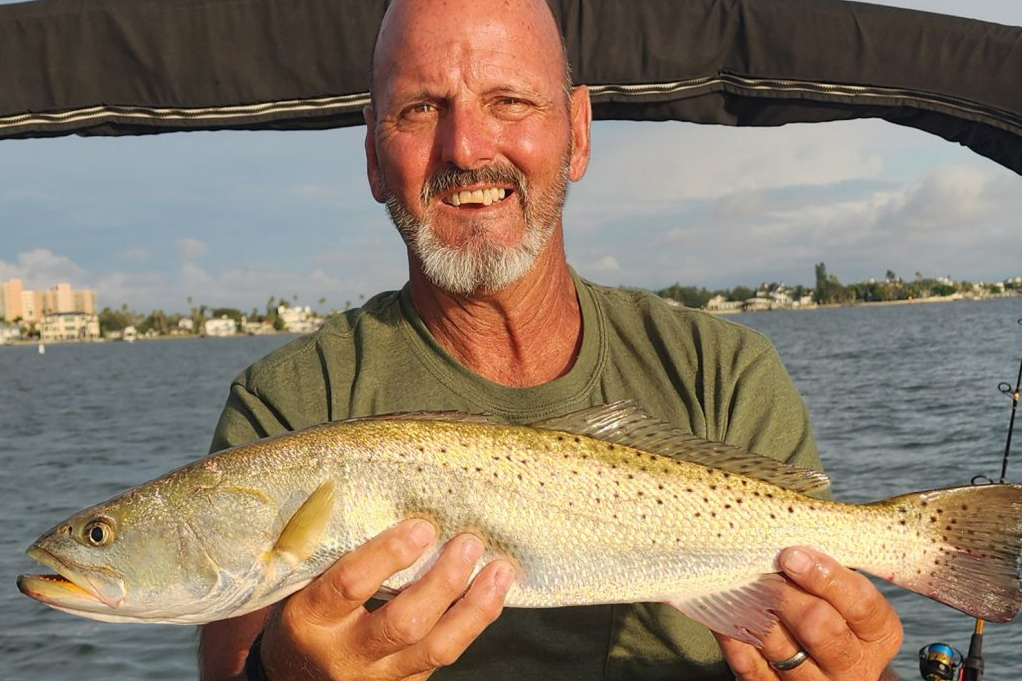
Inshore action has been strong with snook, redfish, and trout making regular appearances in catches. Snook are holding tight to structure—look for them along seawalls, bridge pilings, docks and mangrove shorelines where they can ambush bait in moving water. Redfish are scattered but aggressive during peak tide phases around the mangroves or oysters, and trout are feeding along deeper grass flats and sandy edges, and potholes. Mangrove snapper continue to bite well around docks, piers, rock piles and edges, offering some great table fare for those targeting them with light tackle. Mackerel are still chasing bait schools in the passes and along the beaches and around bigger piers, providing fast-paced action, while a few tarpon are cruising along the passes and beaches. The silver kings are still willing to eat live baits during the right tide, and sharks remain active for those looking to test their strength and tackle.
Fishing Tips
- Snook: Use live baits like greenbacks, threadfins, and shrimp, or try flair hawks and soft plastics at night.
- Redfish: Look for them around mangroves, oyster bars, and flats, and use dead baits during higher tides.
- Trout: Target them with soft plastics, white bait, and shrimp around deeper flats and potholes.
- Tarpon: Target them during the full moon with crab flushes, making it an ideal time to target them.
- Flounder: Find them near sandy bottoms and structures, biting on bottom baits.
- Pompano: Be prepared to move frequently to stay on their bite.
- Sharks: Use big dead baits in areas with moving water.
Help spread the word about what to do if you hook or entangle a bird. Never cut the line; instead, reel in the bird carefully to dehook and release it. If you accidentally hook a dock, break the line at the hook to avoid leaving any line in the water. Seabirds with fishing lines hanging from them are becoming more common, and this could lead to the closure of fishing areas.
Rising concerns about bird entanglements might result in closing fishing spots, impacting the few available locations around Tampa Bay from shorelines, docks, bridges, or piers. Learn more in our recent podcast with Salt Strong: https://www.saltstrong.com/articles/shutting-down-fishing-at-busy-pier/.
NEarshore Fishing Report
The nearshore bite remains productive with lane snapper, mangrove snapper, red grouper, and the occasional mahi making appearances. Lane snapper are chewing steadily on cut baits in the 60–90 foot range, while mangrove snapper respond well to live shrimp or cut threadfin fished with lighter tackle. Red grouper action continues to be consistent on ledges, potholes and hard rock bottom areas. We are even spotting a few mahi in the deeper near shore waters occasionally.
Fishing Tips
- Red Grouper: Target the deepest near shore waters with big dead baits or solid live baits. Use 60 lb test and 7/0 hooks for best results.
- Red Snapper: Use big dead baits like whole squid and bonita strips with heavy tackle to focus on larger fish. Prime trips include the 12-hour extreme, 39-hour, and 44-hour trips.
- Scamp Grouper: Use small to medium pinfish and cut threadfin, especially while targeting mangrove snapper.
- Mangrove Snapper: Near shore, use live shrimp and small chunks of threadfin on 30-40 lb test with 3-4/0 hooks. Offshore, use bigger chunks of cut threadfin or medium pinfish on 40-60 lb test with 5-7/0 hooks.
- Vermillion Snapper: Start around 100 feet of water using cut squid or threadfin. These fish are aggressive and not leader-shy.
- Yellowtail Snapper: Use shrimp, cut squid, and threadfin.
- Pelagic Species: Keep flat lines and pitch rods ready for sailfish, kingfish, wahoo, tuna, and mahi mahi.
Offshore Fishing Report
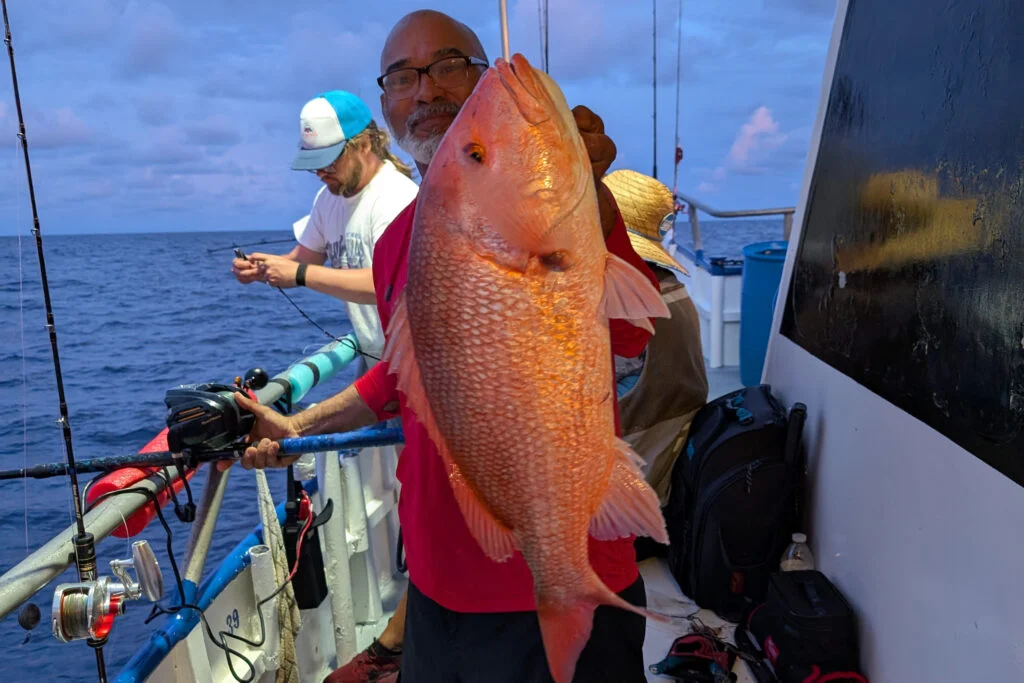
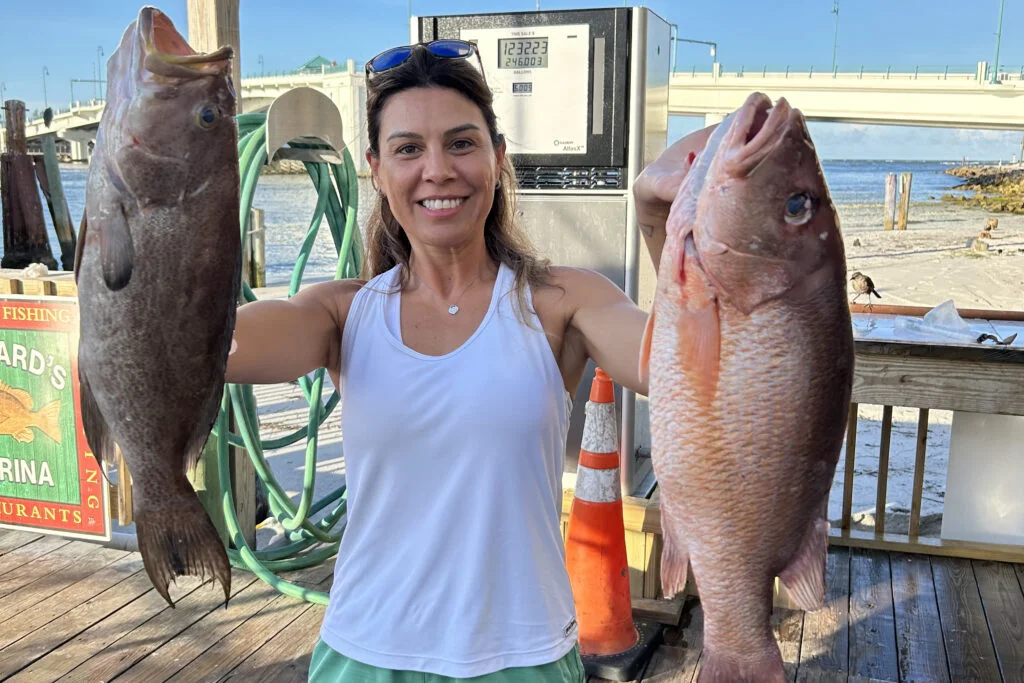
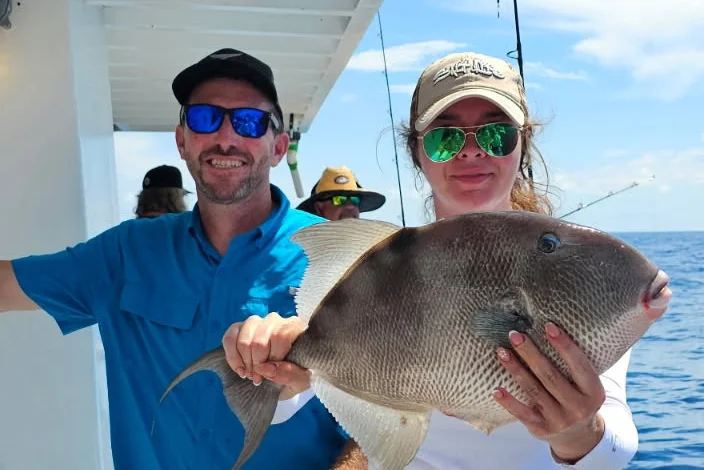
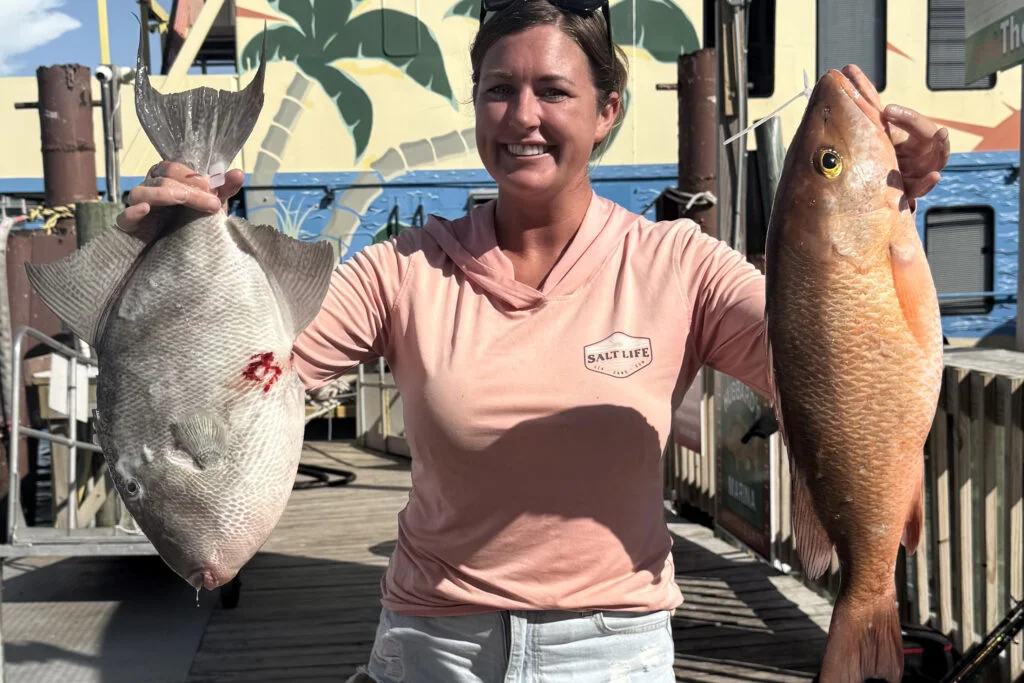
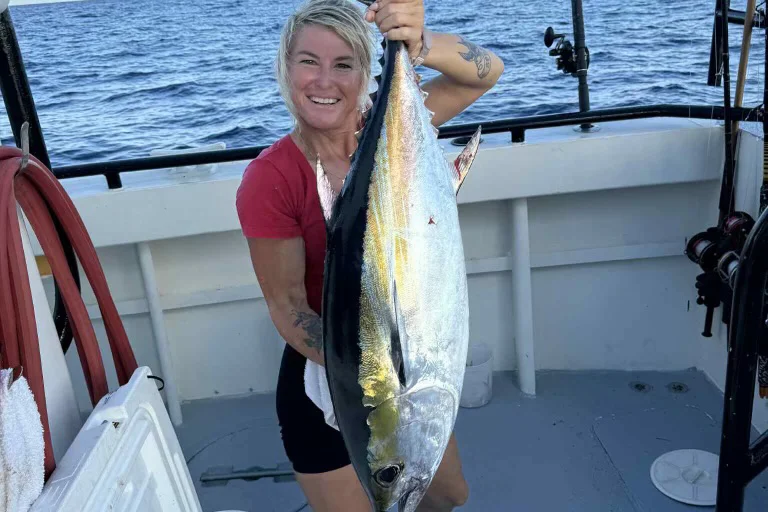
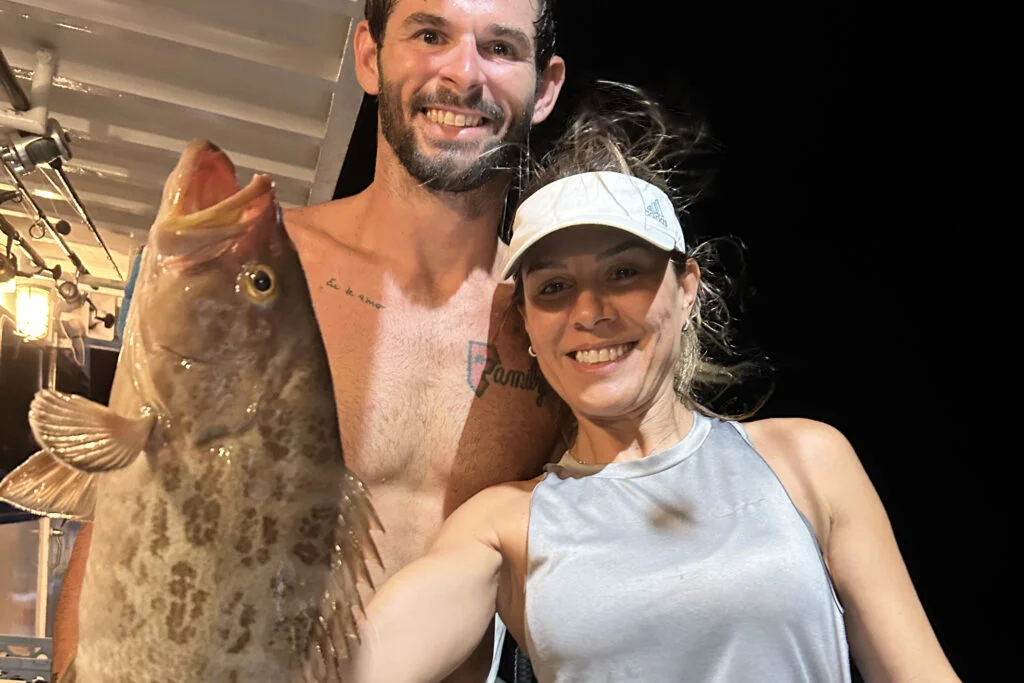
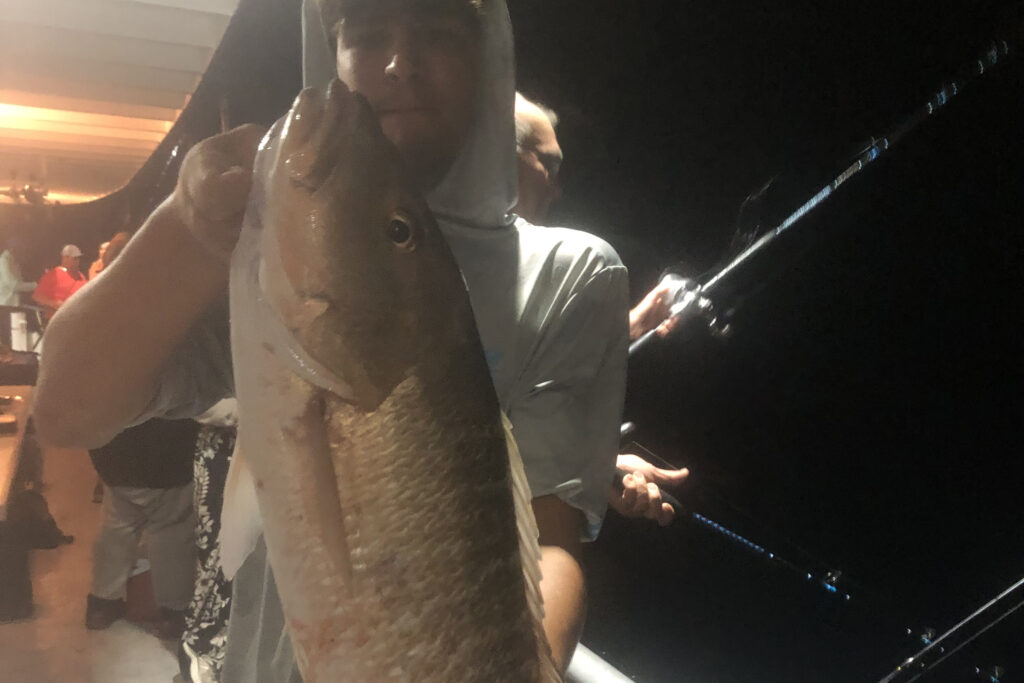
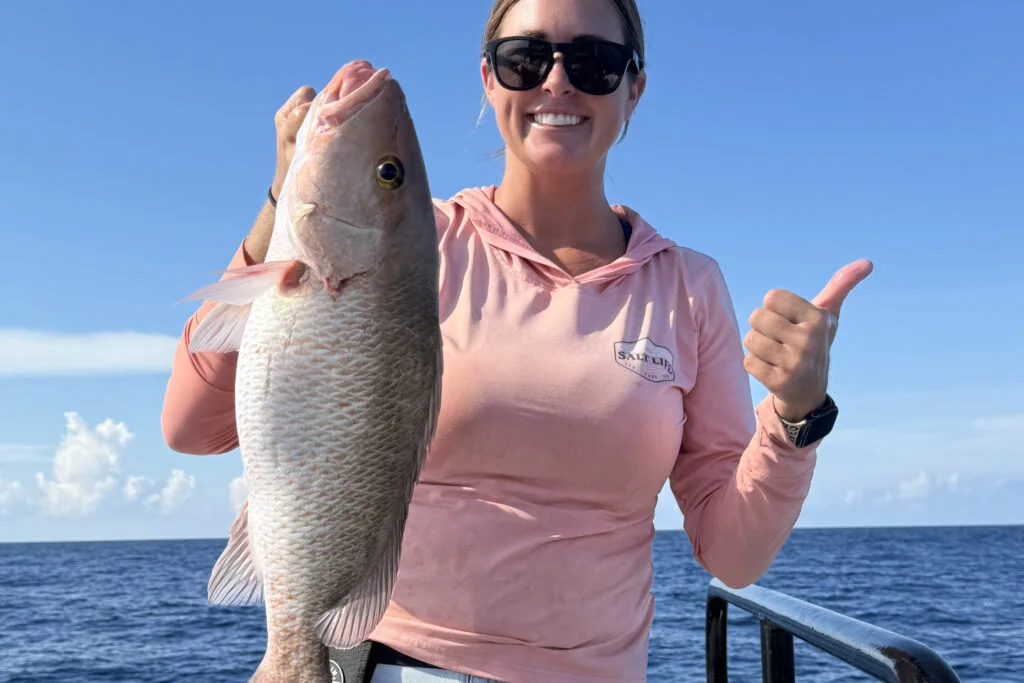
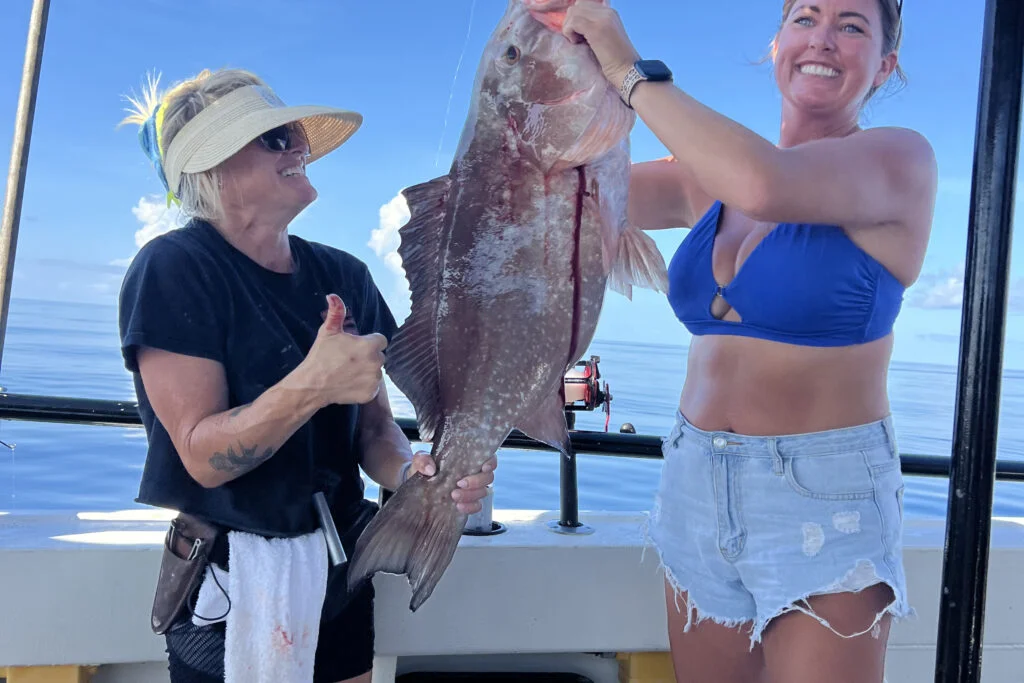
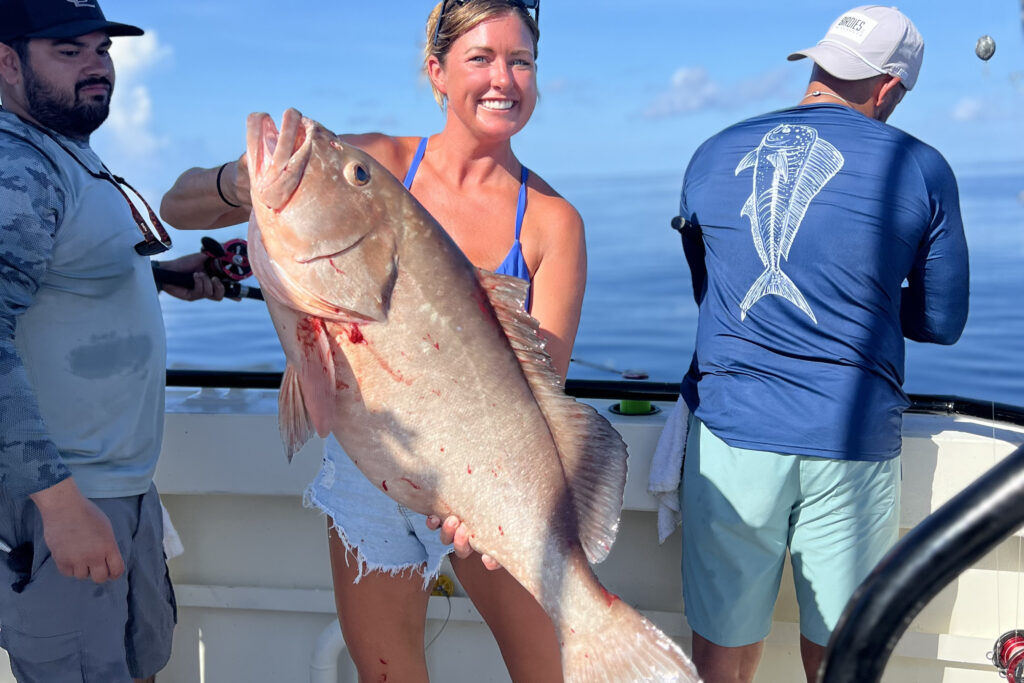
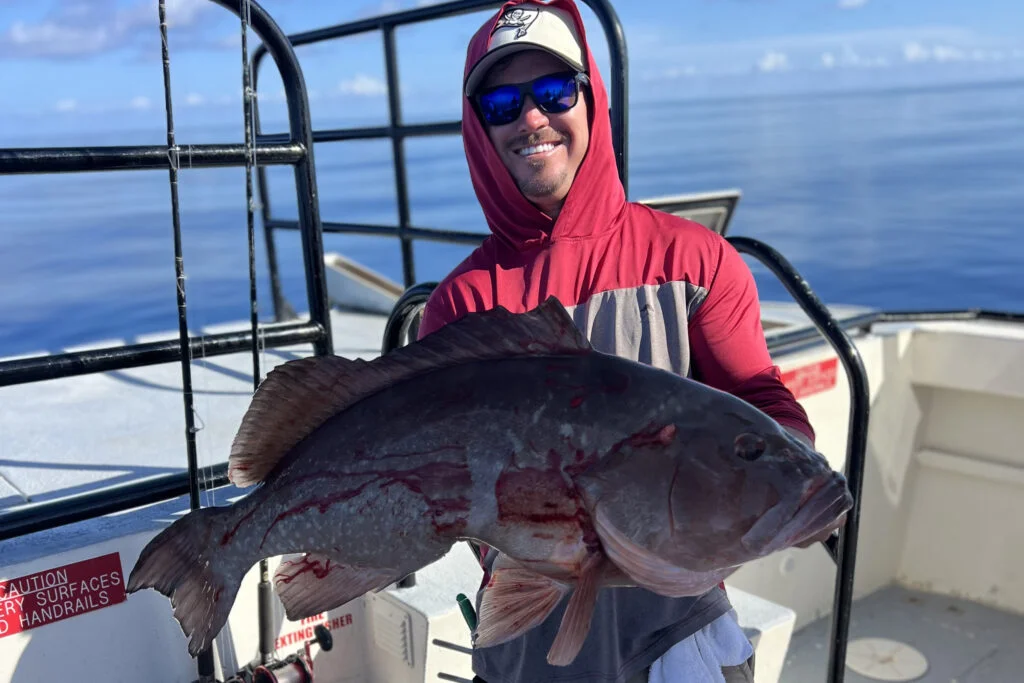
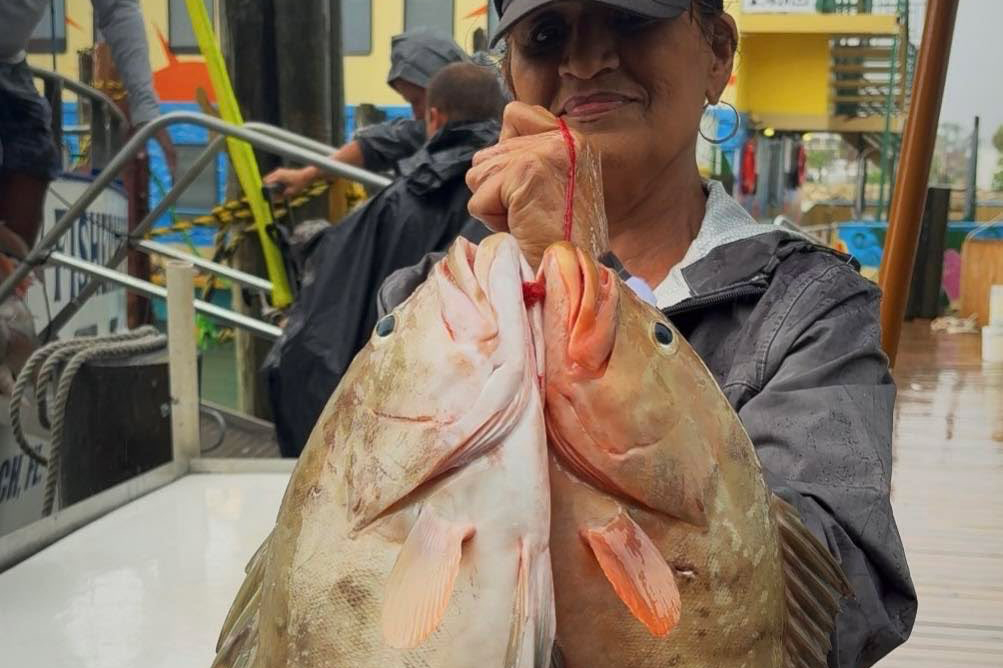
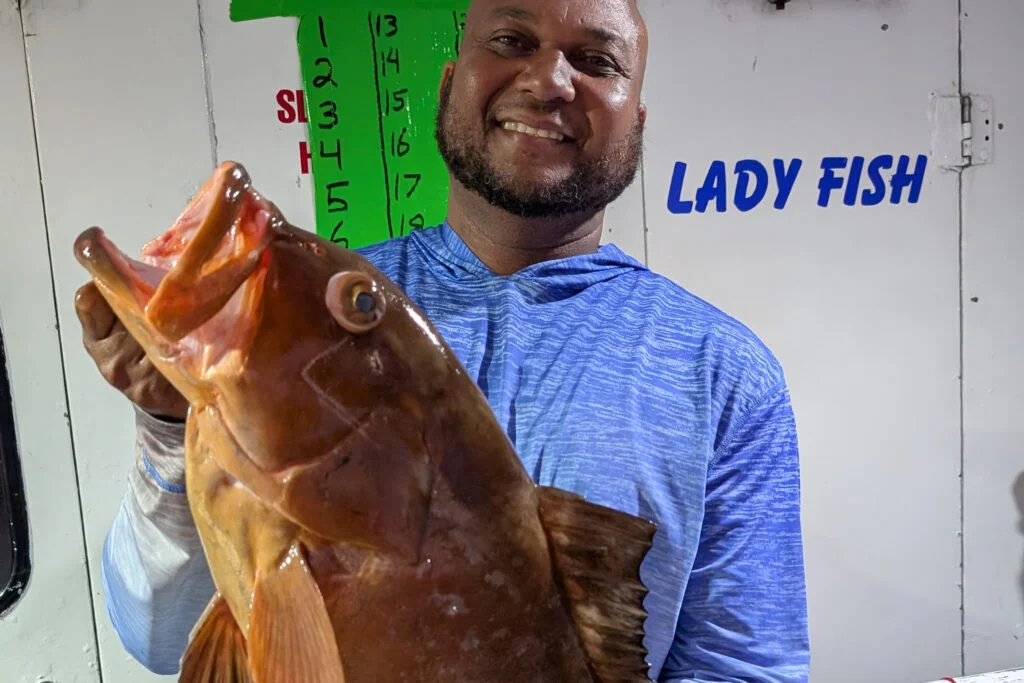
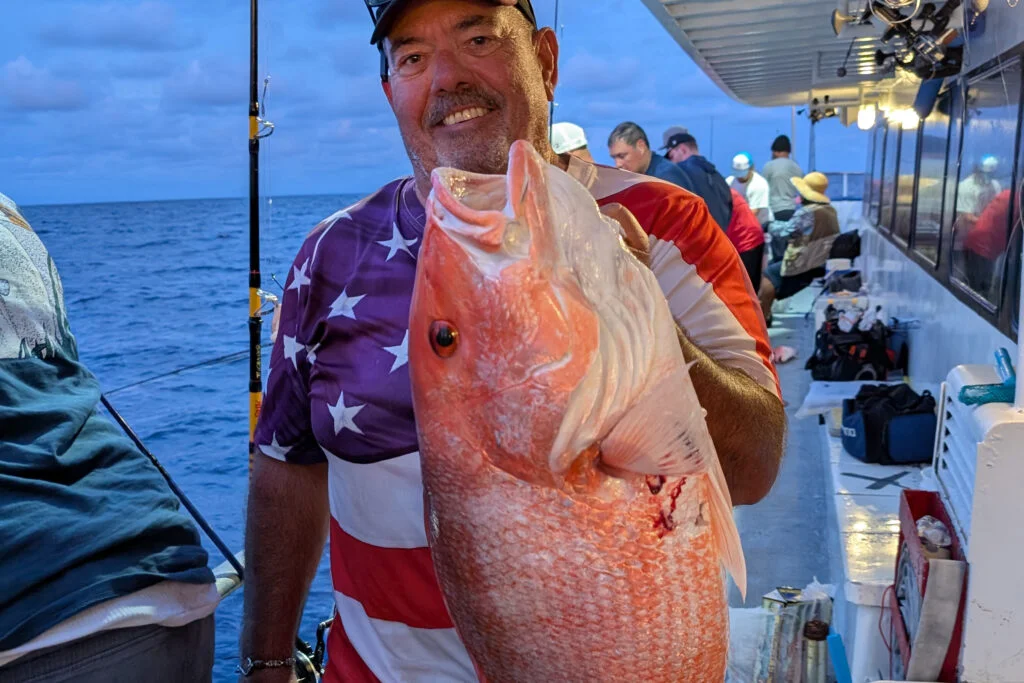
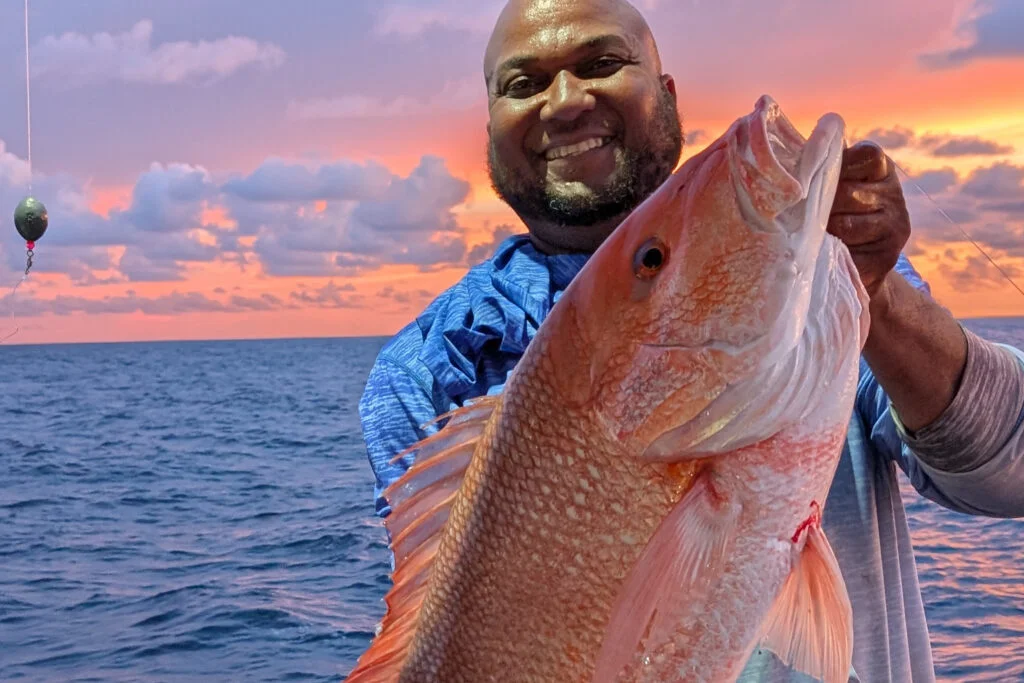
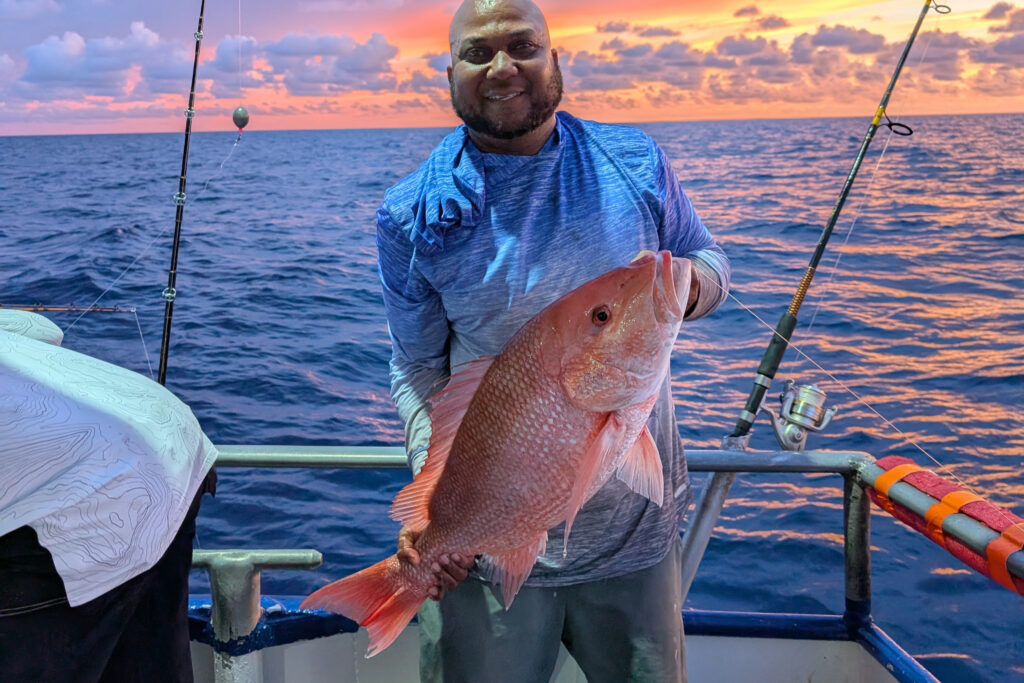
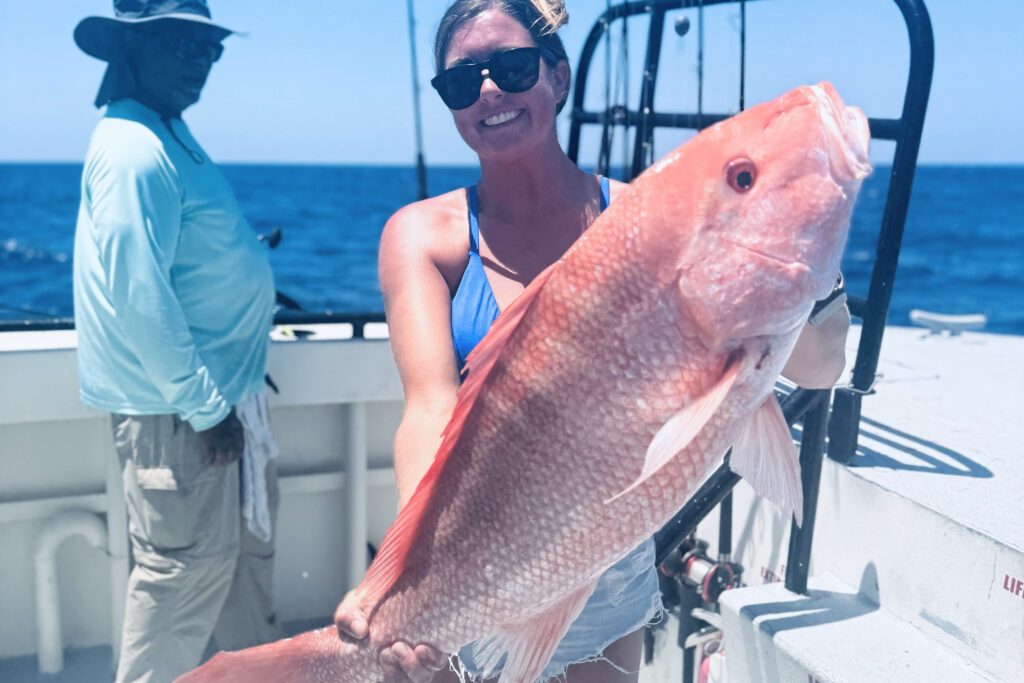
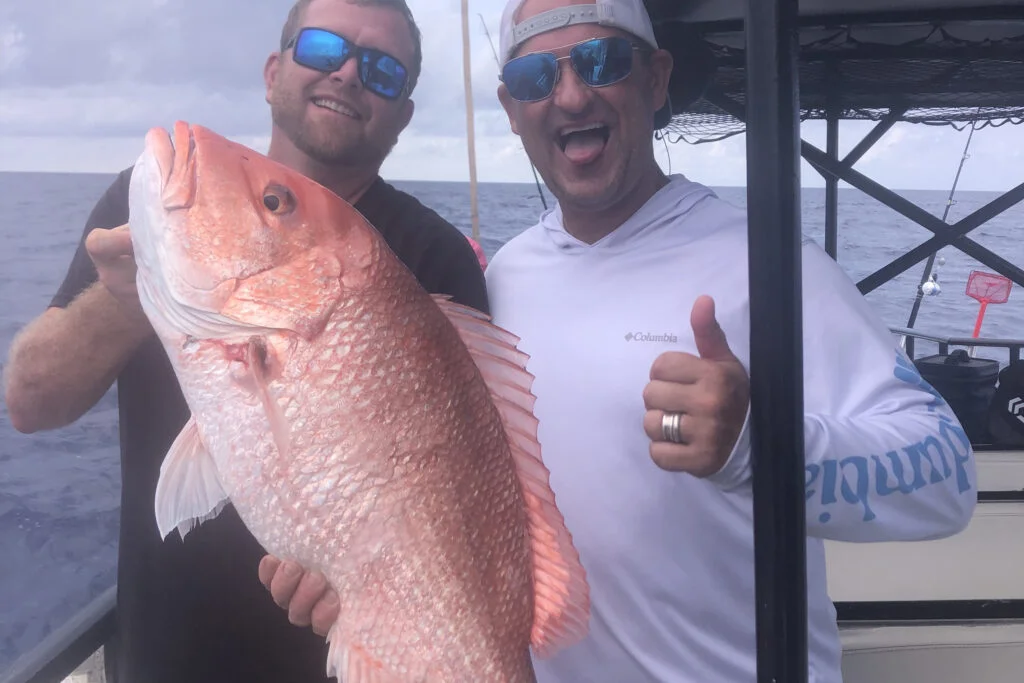
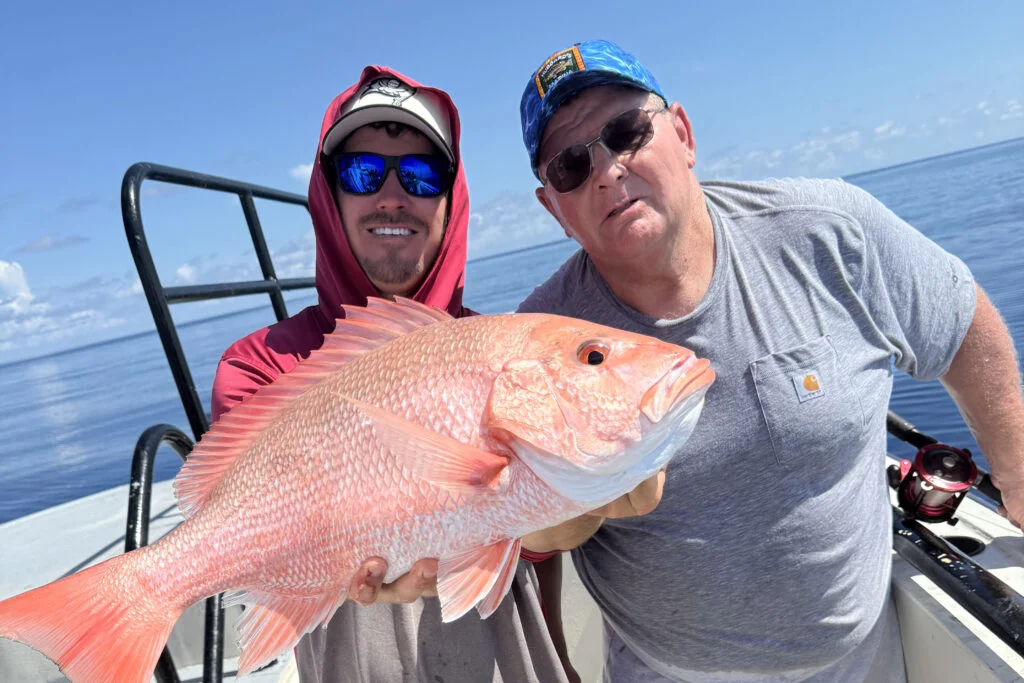
Offshore waters are alive with variety—red snapper, red grouper, triggerfish, scamp grouper, mangrove snapper, yellowtail, mutton snapper, mahi, blackfin tuna, and kingfish are all in the mix. Red snapper are still responding best to large dead baits like bonita strips, goggle eyes, and northern mackerel, while red grouper are taking squid, hefty cut baits, and live baits too. Triggerfish and scamp grouper are coming from deeper offshore waters beyond 160ft, and mangroves are biting well on cut threadfin with the double-snelled rigs. Yellowtail and mutton snapper are showing best on our longer-range trips, especially during low-light periods. For pelagic lovers, mahi, blackfin tuna, and kingfish are providing exciting high-speed action between bottom fishing. We are seeing them trolling, flat line fishing, slow pitch jigging and even while reeling up or dropping baits while bottom fishing too.
Don’t forget, that we have some great videos on our fishing tips and tricks page here to show you how to target and rig for almost any species-> https://www.hubbardsmarina.com/fishing-tips/
Remember that when fishing in deeper nearshore and offshore federal waters, the Descend Act requires you to have a descending device or venting tool “rigged and ready.” If you know how to use a venting tool, keep it prepared. If not, here’s some helpful advice: https://bit.ly/3L5HTnv. Using a descending device is straightforward and doesn’t require as much precision or practice as venting. Return em’ Right has a training course only takes about 10-15 minutes, and you can learn valuable techniques to protect our offshore fishery. Spread the word by visiting: https://returnemright.org/.
TERMS OF REFERENCE-
Inshore: This covers the areas from the inner bays, through the bridges, and right up to the beaches.
Near Shore: This includes the coastal waters from the beaches up to twenty miles offshore, or up to a depth of 100 feet.
Offshore: This extends from twenty miles offshore or from a depth of 100 feet and beyond.
For more fishing reports, photos, videos, and other content, check out Hubbard’s Marina on Facebook, Instagram, YouTube, TikTok, Twitter, Pinterest, or Snapchat by searching for @HubbardsMarina. Remember our family motto: “If you’re too busy to go fishing, you’re just too busy!” Thank you for reading our report.
Capt. Dylan Hubbard, Hubbard’s Marina
Phone or text: (727) 393-1947
Website: Hubbard’s Marina
If you’re not seeing the latest article, try clearing your browser cache.
You can search “how to clear browser cache” on Google for quick steps.

